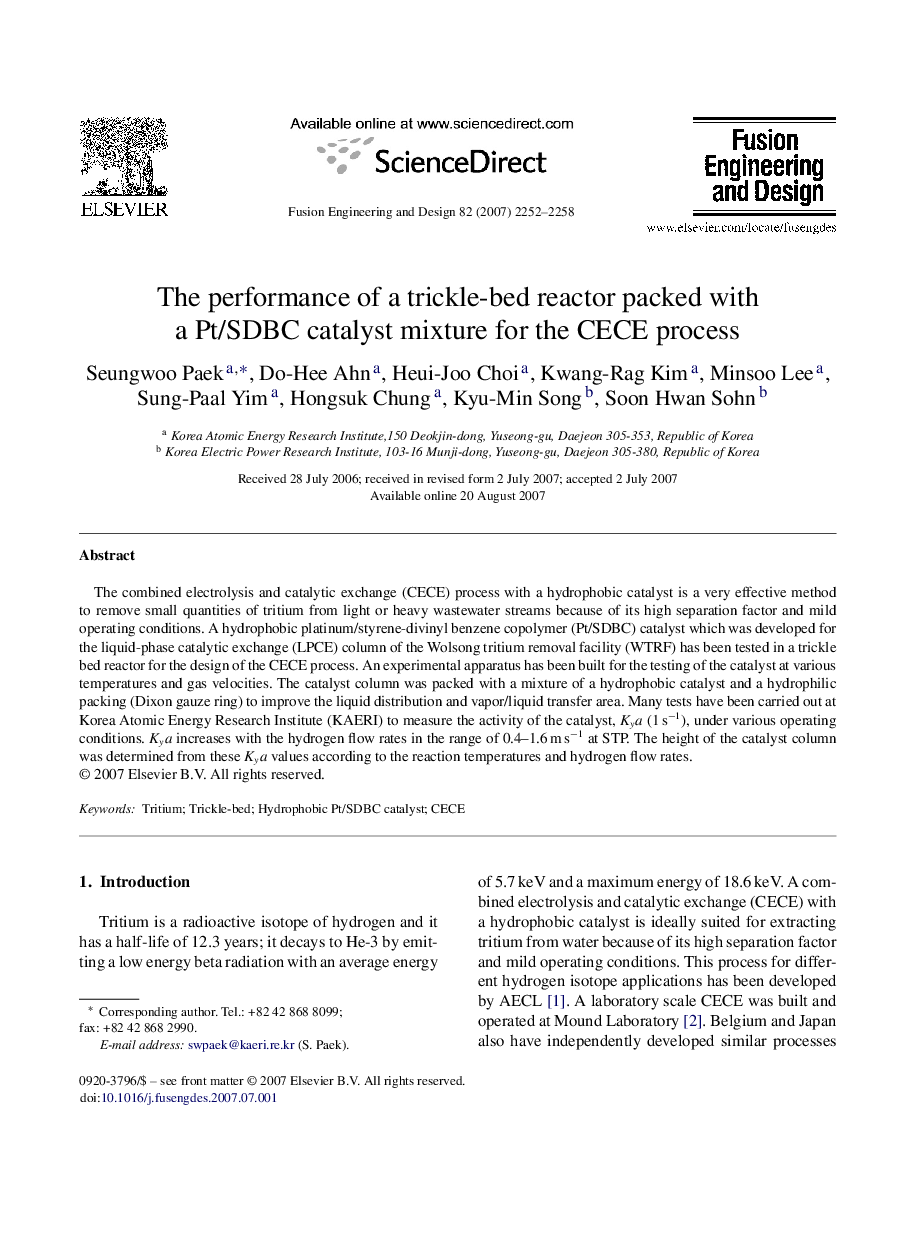| Article ID | Journal | Published Year | Pages | File Type |
|---|---|---|---|---|
| 273634 | Fusion Engineering and Design | 2007 | 7 Pages |
The combined electrolysis and catalytic exchange (CECE) process with a hydrophobic catalyst is a very effective method to remove small quantities of tritium from light or heavy wastewater streams because of its high separation factor and mild operating conditions. A hydrophobic platinum/styrene-divinyl benzene copolymer (Pt/SDBC) catalyst which was developed for the liquid-phase catalytic exchange (LPCE) column of the Wolsong tritium removal facility (WTRF) has been tested in a trickle bed reactor for the design of the CECE process. An experimental apparatus has been built for the testing of the catalyst at various temperatures and gas velocities. The catalyst column was packed with a mixture of a hydrophobic catalyst and a hydrophilic packing (Dixon gauze ring) to improve the liquid distribution and vapor/liquid transfer area. Many tests have been carried out at Korea Atomic Energy Research Institute (KAERI) to measure the activity of the catalyst, Kya (1 s−1), under various operating conditions. Kya increases with the hydrogen flow rates in the range of 0.4–1.6 m s−1 at STP. The height of the catalyst column was determined from these Kya values according to the reaction temperatures and hydrogen flow rates.
